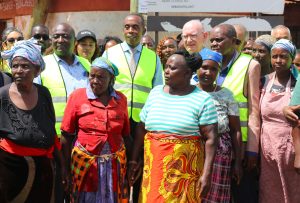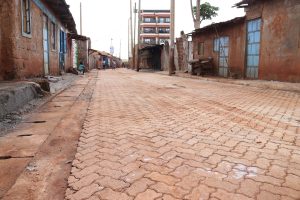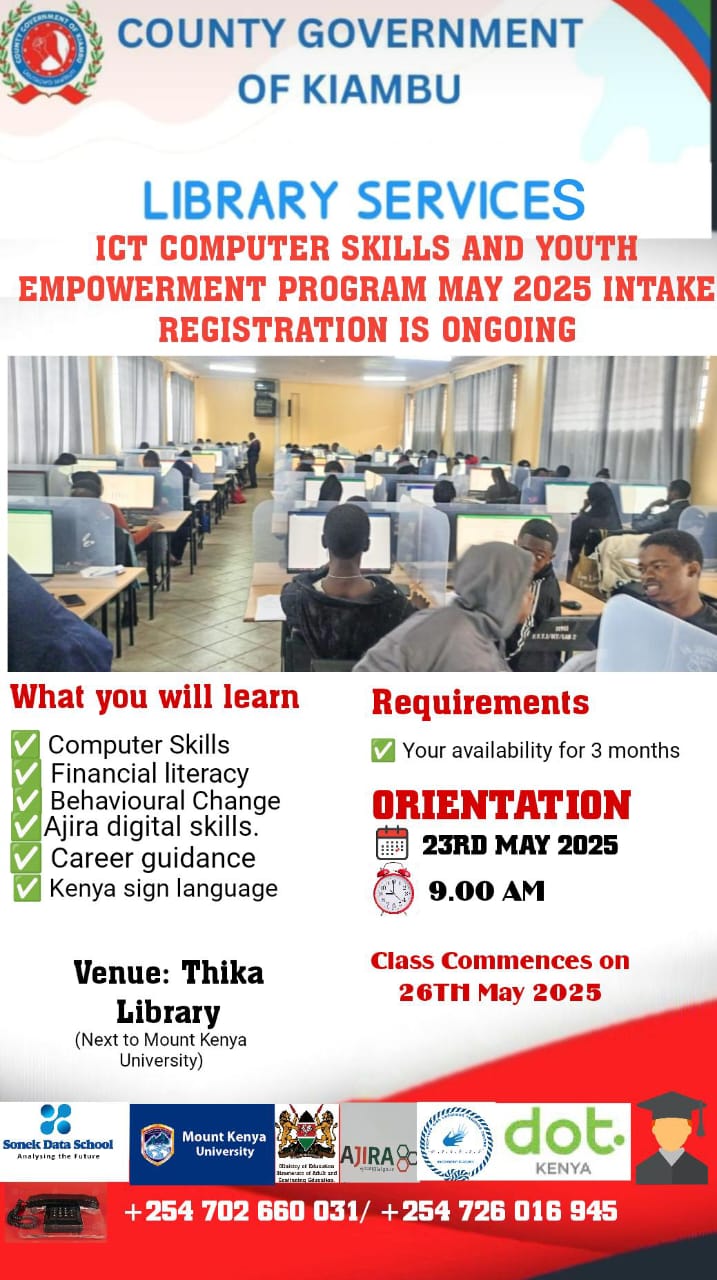WORLD BANK VICE PRESIDENT LAUDS KISIP 2’S TRANSFORMATIVE IMPACT IN KIAMBU COUNTY
In the heart of Umoja—one of Kiambu County’s most densely populated informal settlements—a remarkable transformation is underway.

Umoja Settlement in Thika Municipality
Paved roads have replaced dusty paths, solar lights now brighten once-dark alleys, and clean, flowing sewer lines have ended years of neglect.
During a visit to Umoja Settlement in Thika Municipality, World Bank Group Vice President and Chief Risk Officer Dennis McLaughlin commended the Second Kenya Informal Settlements Improvement Project (KISIP 2) for its transformative impact.
Accompanied by Kiambu Governor H.E. Dr. Kimani Wamatangi, World Bank officials, and the National Project Coordination Team led by National Project Coordinator George Arwa, McLaughlin inspected several ongoing projects valued at Ksh. 900 million.

The World Bank Group Vice President and Kiambu Governor Kimani Wamatangi at the Umoja Settlement in Thika Municipality
McLaughlin reaffirmed the World Bank’s commitment to uplifting vulnerable communities, stating, “Our vision is to see informal settlement residents connected to the world—accessing services, working, and thriving like any other citizen. We are dedicated to supporting infrastructure upgrades that improve living conditions and create sustainable income opportunities.”
Governor Wamatangi echoed the importance of the partnership with the World Bank and Agence Française de Dévelopment (AFD), noting: “We are proud of this collaboration and fully committed to the transparent and effective implementation of these projects. This partnership goes beyond infrastructure; it restores dignity, hope, and opportunity.”
He appreciated the World Group Vice President and the World Bank for their belief in the potential of Kiambu’s residents.
KISIP 2 is actively upgrading infrastructure in five informal settlements across Kiambu County—Umoja, Kiang’ombe, Bosnia, Fort Jesus, and Misri. The project includes tarmacked and cabro-paved roads, pedestrian footpaths, drainage systems, and solar-powered street lighting—significantly improving safety, mobility, and quality of life.

The World Bank Group Vice President and Kiambu Governor Kimani Wamatangi, and some of the residents at the Umoja Settlement in Thika Municipality
National Project Coordinator George Arwa emphasized the broader impact of the initiative: “Starting with issuing title deeds in Umoja, we’ve given residents a sense of ownership and security. Infrastructure upgrades like roads, security lights, and drainage have empowered residents to access bank loans and invest in their properties with confidence.”
For residents like Mary Njeri, a mother of three who has lived in Umoja for over a decade, the transformation represents more than infrastructure; it symbolizes recognition and hope.
“We feel seen,” she says with emotion. “For the first time, we’re not forgotten. Our children finally have a place they can grow up in and be proud of.”
In addition to infrastructure development, KISIP 2 is implementing land tenure regularization in five other settlements: Matharau, Kiandutu, Kanjeru, Kiamburi, and Shauriyako Kiroe. Over 6,000 title deeds are currently in the final stages of production. With survey plans approved by the County Assembly and under review by the Survey of Kenya, thousands of residents stand to benefit from secure land ownership.

The transformed pathways at the Umoja Settlement Scheme
KISIP 2 is also spearheading the development of a comprehensive, specific slum upgrading strategy for Kiambu County. This strategy will guide land use planning, strengthen tenure security, improve infrastructure and social amenities, and support the delivery of adequate housing.
Key pillars of the strategy include climate resilience, environmental stewardship, participatory planning, sustainable livelihoods, and the establishment of a coordinated multi-stakeholder institutional framework. Scheduled for implementation over a ten-year period, the strategy also promotes equity, inclusivity, transparency, devolution, public participation, and strategic partnerships.
Governor Wamatangi described KISIP 2 as a “game changer” for informal settlements in Kiambu, enhancing access to basic services and secure land tenure. He emphasized the county’s robust monitoring mechanisms, ensuring the responsible use of funds and long-term impact for residents.
By: Enock Maroa (PCO)
County Government of Kiambu








